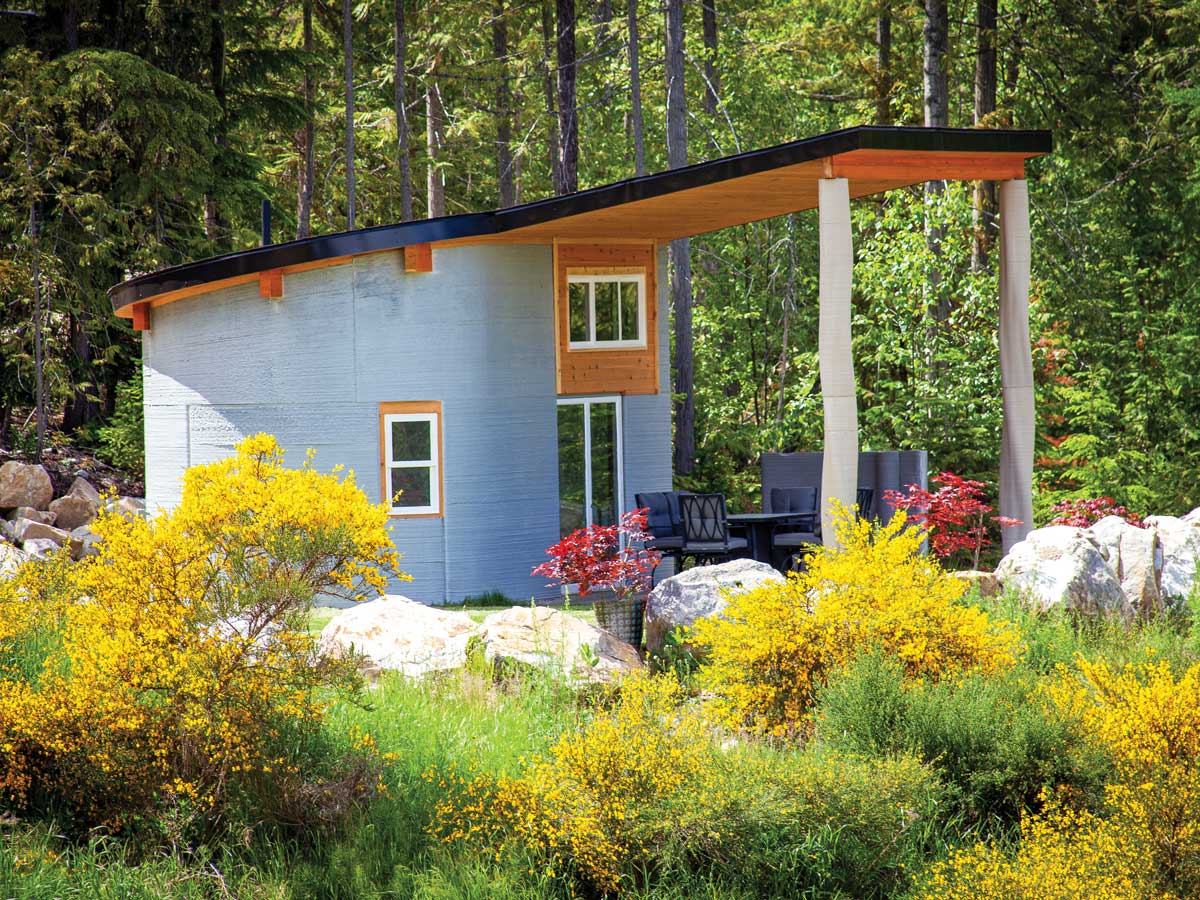Can an architectural 3D printer be the housing solution we need?
The 3D-printed Fibonacci House in Procter, BC can be rented through Airbnb (courtesy of Twente Additive Manufacturing)
When Ian Comishin, from Kimberley, British Columbia, started a 3D printing business in the Netherlands with four other partners in 2018, the idea was to build architectural 3D printers, with the goal of building printed houses In 3D. “We had no idea what kind of tiger we were grabbing by the tail,” says Comishin.
They emerged with the first 3D-printed house in Canada, the Fibonacci House, a small structure of approximately 400 square feet in the quaint community of Procter, British Columbia. The house, built in 2020 and made rentable on Airbnb last summer, serves as a model for the future. 3D developments in this country.
As Canada continues to experience a housing affordability crisis, Comishin-based company Twente Additive Manufacturing (TAM) sees 3D printing as a viable solution. With outposts in Europe, Dubai and Canada, TAM continues its work of developing architectural 3D printers for a growing global customer base. According to Comishin, 3D-printed homes are a more affordable and faster-to-build alternative to traditional construction methods and can help solve housing shortages in communities around the world.
Although the technology is still in its infancy, the process is relatively simple: TAM’s 3D printers push a special concrete mix through a nozzle (like toothpaste squeezed out of the tube), creating layers of concrete to build a wall . This method is indeed fast – TAM’s first 3D printed house was designed, printed and installed in five weeks – and cheaper than conventional means. According to Comishin, at this point it is 15-25% cheaper to build a 3D house.
The time factor is a major selling point. So far, TAM has been working with international organizations to house people who are homeless or excluded from the market. One such initiative is underway with Vancouver-based charity World Housing to build an “affordable village” of five two-bedroom homes for needy families in Nelson, BC. TAM has also partnered with the University of Windsor and Habitat for Humanity to build residential homes in Windsor-Essex, Ontario, a project that is expected to be completed in the coming months.
TAM has engineering and administrative wings in the Netherlands, but the company also has a subsidiary in Dubai, a research and development facility in Germany and two operations in British Columbia. It currently produces its printers in Hemmingford, Quebec. Comishin says there has been strong global demand for 3D printers like TAM’s, with similar affordable housing projects being planned in Japan, the Middle East and South America.
TAM develops sophisticated 3D printers for sale and also offers 3D printing services. This means that the company is constantly committed to its own product line and can rapidly evolve technologies. Printers and print services are TAM’s two main revenue generators, however, Comishin says engineering, consulting and software licensing all contribute to its bottom line.
Nemkumar Banthia, professor of civil engineering and Canada Research Chair at the University of British Columbia, believes that 3D printing technology has potential for housing and says it can also promote durability. With streamlined robotics and computing, construction waste is reduced by 30% in the production process, he estimates. A 3D printer can be used over and over again, and designs can be changed by updating software instructions that tell printers what to do. And, because the software can be easily updated, it allows greater architectural freedom to customize homes. “Also,” Banthia adds, “3D-printed homes are more suitable for certain emergency situations, such as relocation [communities] after a disaster.
In the United States, Scott Dunham, vice president of research at 3D printing market research firm SmarTech Analysis, believes that despite the relative speed at which they are being built, typical barriers remain.
“This presents inherent challenges, as most 3D structures require a step-by-step approach so that utilities and such can be integrated into the structure,” says Dunham. This means that even though a printer can quickly produce concrete walls, a house still needs tradesmen to install the electrical, plumbing and insulation.
Skilled workers must be trained to design the structures and operate the machinery, and this is an area in which Comishin thinks Canada could fall behind. “Across Europe there are technical universities teaching the software and hardware behind this technology,” he says. “Canada needs to catch up. In Nelson, Selkirk College quickly adapted its digital fabrication program at its Trail, BC campus to study 3D-printed homes and TAM methodology. “They bring their students into our R&D lab and we let them design parts that we’ll print for them so they can get a feel for the capabilities of the technology.”
Banthia says 3D printing is the future of sustainable and affordable housing around the world, including in countries like China, the United States and Singapore, where entire neighborhoods have already been built using 3D printing. this technology. 3D printing business will reach an estimated global value of US$55.8 billion by 2027.
HOUSING AND SUSTAINABILITY
The Canadian housing market may be slowing in some markets, but it still broke records as prices soared and supply dwindled. Learn more about this impact. Plus, find out what Canadians who don’t own a home think about their chances of entering the housing market with this recent survey from CPA Canada.


Comments are closed.